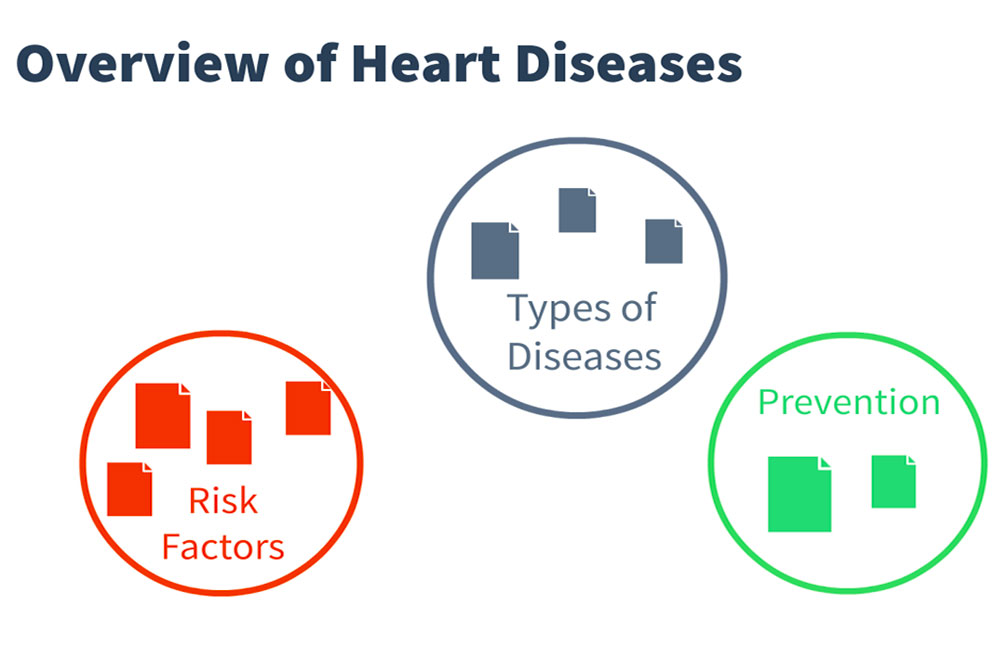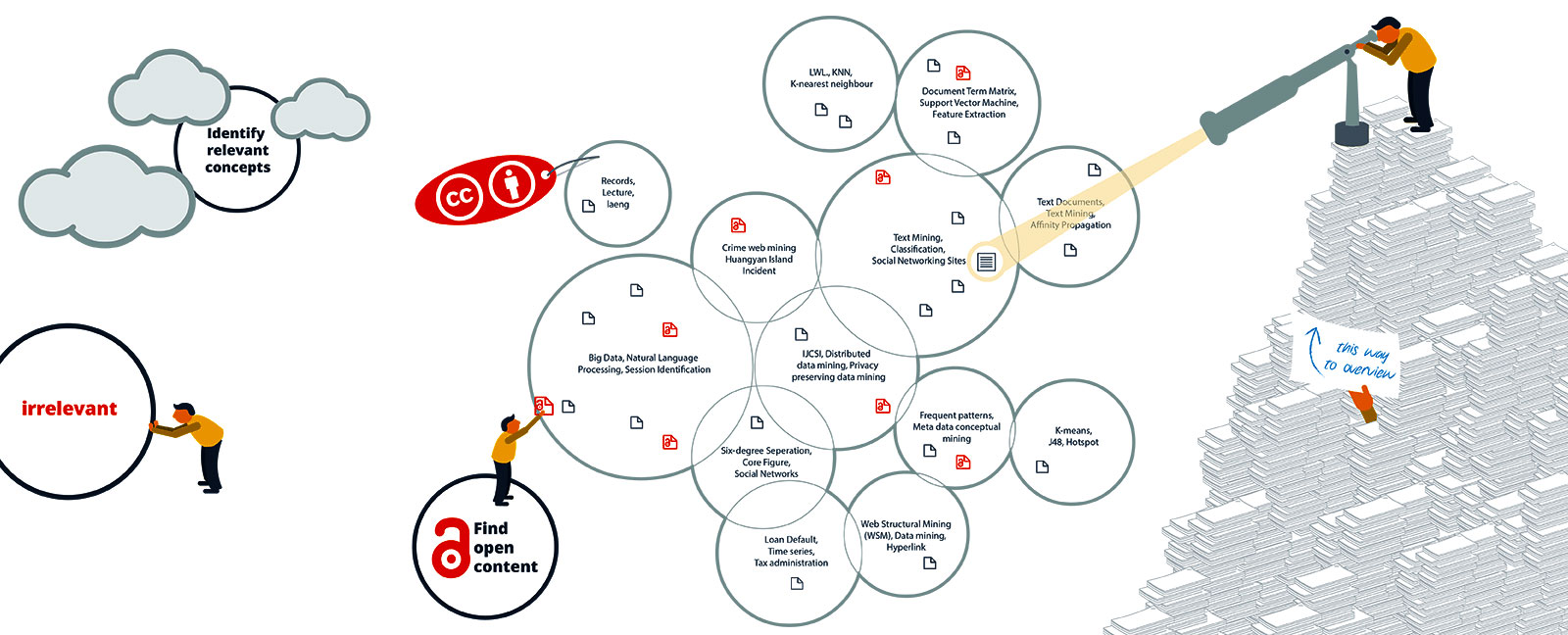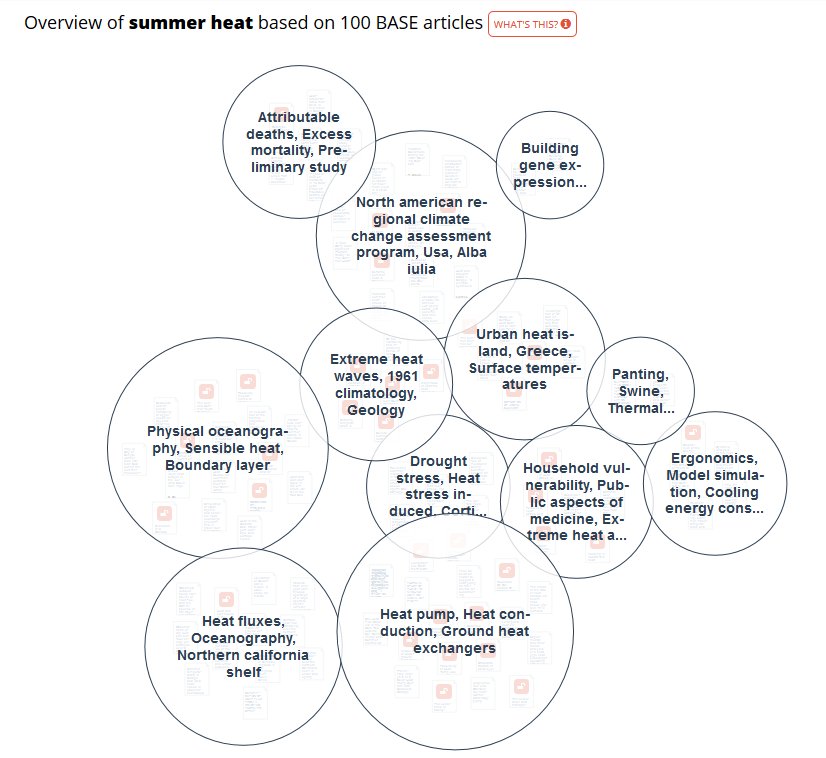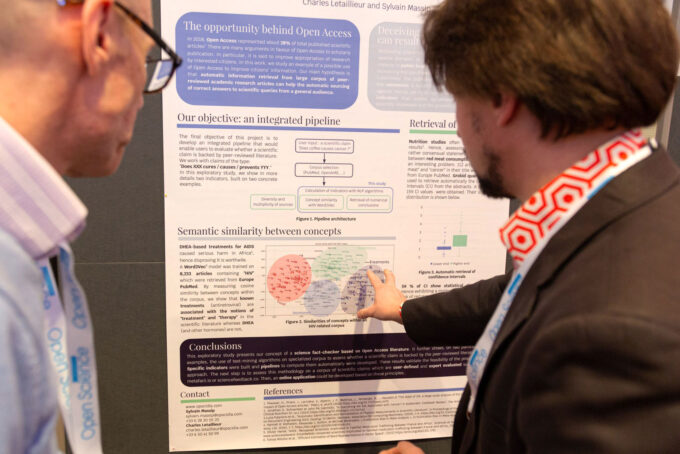
Open Science, All The Way: Open Knowledge Maps
Apart from the written outcomes of scientific studies, an increasing amount of data, methods and intermediary results are published. However, research findings are rarely transferred to practice. Open Knowledge Maps intends to close this gap.
Science and research are more productive than ever. Every year, around 2.5 million research articles are published, and counting. A lot of research information is openly available: thanks to the open access movement, we can now find more than 100 million scientific outputs on the web. We have made great strides with respect to accessibility; but what about discoverability? After all, this enormous amount of knowledge is only of use to us, if it reaches the people that need it, and if it is reused as a basis for further research or transferred to practice. Here we can see a big gap. Depending on the discipline 12% to 82% of all scientific publications are never cited. This means that these publications do not serve as a basis for further research. When talking about transfer to practice, the gap is even wider: even in application-oriented disciplines such as medicine, only a small percentage of research findings ever influence practice – and even if they do so, often with a considerable delay.

What prevents knowledge transfer to practice?
One reason for this situation is that the tools for exploration and discovery of scientific knowledge are seriously lacking. Most people use search engines for this task. Search engines work very well, when you know what you want. Then, they deliver the result you are looking for – often with high precision. However, if you want to get an overview of an unknown scientific field, the list-based representation with only 10 results per page is not sufficient. With search engines, it takes a long time, before you know the main areas in a field, the most important terms, authors and journals. It can take weeks if not months – indeed in many PhD programs, the whole first year is devoted to this process. Many people in research and especially practitioners do not have that much time. Think about science journalists or patients. To summarize: there are many people out there that could benefit from scientific knowledge, if there were better tools for discovering research results.
Knowledge maps instead of lists
At Open Knowledge Maps, we intend to close this gap, to provide the missing link between accessibility and discoverability. Instead of lists, we use knowledge maps for discovery. Knowledge Maps show the main areas of a field at a glance. Relevant publications are already attached to each area. This enables users to get a quick overview of a field.

The sub-areas also make you aware of the terminology in a field. This information alone may take weeks to find out. How much time have you already lost to searching without knowing the best search terms? In addition, the knowledge map enables users to separate the wheat from the chaff with respect to their current information need. For an ambiguous search term for example, the different meanings are sorted into separate areas.

Open Knowledge Maps as an openly accessible service
At Open Knowledge Maps, we are offering an openly accessible service, which allows you to create a knowledge map for any search term. Users can choose between two databases: Bielefeld Academic Search Engine (BASE) with more than 110 million scientific documents from all disciplines, and PubMed, the large biomedical database with 26 million references. We use the 100 most relevant results for a search term as reported by the respective data base as a base for our knowledge maps. The ordination and the determination of the areas is based on textual similarity of the metadata of the results. This means: the more words two documents have in common in either title, abstract, authors or journal name, the closer they are positioned on the map and the more likely they are placed in the same area. For everyone who would like to dive deeper into the algorithms used to create the map, our article Open Knowledge Maps: Creating a Visual Interface to the World’s Scientific Knowledge Based on Natural Language Processing in the journal 027.7 is worth reading.
The knowledge map for “summer heat” – suitable for the current weather – can be seen below. As described above, the bubbles represent the different areas. If you click on one of the bubbles, you are presented with papers related to this area. Open access articles are clearly marked and can be read within the interface. The idea is that you do not need to leave the browser tab while searching for literature. Go to Open Knowledge Maps to check out the search service.

Knowledge Map of the term “summer heat”. Interactive Version: please click here.
We have received a lot of positive feedback on this service from the community. We are honored and humbled by hundreds of enthusiastic posts in blogs, and on Facebook and Twitter. The German IT magazine c’t devoted an article (link in German) to Open Knowledge Maps – and in November 2016, we were featured on the frontpage of reddit. In little more than a year, we have already established a stable user base. Since our first launch in May 2016, we have had more than 120,000 visits and more than 33,000 knowledge maps have been created on the site.
Open Knowledge Maps brings open science to life
The “Open” in Open Knowledge Maps does not only stand for open access articles – we want to go the whole open science way and create a public good. This means that all of our software is developed open source. You can also find our development roadmap on Github and leave comments by opening an issue. The knowledge maps themselves are licensed under a Creative Commons Attribution license and can be freely shared and modified. We will also openly share the underlying data, for example as Linked Open Data. This way, we want to contribute to the open science ecosystem that our partners, including rOpenSci, ContentMine, Open Knowledge, the Internet Archive Labs and Wikimedia are creating.
We see libraries as important collaboration partners. We cooperate with the libraries of the University of Bielefeld and the Austrian Academy of Sciences. ZBW is also using software from Open Knowledge Maps in a joint project with the Know-Center. This collaboration is a win for both sides: Open Knowledge Maps is a stable, user friendly system, which enables libraries to visualize their collections of documents and to improve their discoverability. On the other hand, improvements from these projects are fed back into the software of Open Knowledge Maps, improving the system for all users.
Vision: Collaborative literature search
In the future, we want to enable collaborative literature search in Open Knowledge Maps. At the moment, most people are tackling discovery on their own. But usually someone has already walked this way before you. Unfortunately, the knowledge gained during discovery remains in people’s heads. We want to further develop Open Knowledge Maps, so that maps can be modified, extended and shared again – so that we can build on top of each other’s’ knowledge. We have created a short video to illustrate this idea:
We see libraries and librarians as central to this vision. A collaborative system cannot work without experts on knowledge curation and structuring. Together with the other stakeholders from research and society, including researchers, students, journalists, citizen scientists and many more, we want to create a system that enables us to create pathways through science for each other. So that we can all benefit from this unique knowledge.
View Comments

Social Media and Scientific Communication: A Minor Role for Open Science in the Statement?
In the recently published statement “Social Media and Scientific Communication” that...




 Name
Name
AuthorHallo,
mir ist nicht ganz klar, wie mich das Tool bei einer “systematischen Literaturrecherche” unterstützen könnte.
Es ist schon mal unklar, wie die einzelnen “Kreise” entstehen und woher die Wörter kommen, die da drin sind. Bei einer “Map” (beispielsweise eine “Evidence Map”) lege doch ich als Forscher fest, welche Aspekte des Forschungsbereichs mich interessieren – d.h. die Kategorien lege ich fest, weil sie immer von der Fragestellung abhängig sind.
Mein PubMed-String (1786 Zeichen mit ~4500 Treffern) ergibt eine Hand voll Kreise. Es ist definitiv nicht das gesamte Feld zu sehen. Mir ist unklar, wie mir das helfen soll.
Sind bereits Publikationen bekannt, die dieses Tool verwenden?
 Peter Kraker
Peter Kraker
AuthorHallo,
vielen Dank für Ihr Interesse an Open Knowledge Maps. Die derzeitige Version des Such-Services ist sicher am besten dafür geeignet, einen Überblick über ein Thema zu bekommen, über das man wenig bis gar nichts weiß – d.h. dass man die einzelnen Aspekte noch nicht kennt bzw. noch nicht bennenen kann. So wird es unserer Erfahrung auch zumeist genutzt. Das Service ist derzeit noch im Beta-Stadium und wir freuen uns, Ihre Anforderungen für ein systematic review kennenzulernen.
Die Erstellung der Kreise erfolgt wie im Beitrag beschrieben auf Basis von Textähnlichkeit. Die Benennung erfolgt über die Schlagwörter, die von den AutorInnen für die in den Kreisen enthaltenen Publikationen vergeben werden. Mehr Details finden Sie im Paper in 027.7, welches auch im Beitrag eingebettet ist. Häufig gestellte Fragen beantworten wir auch in den FAQ: https://openknowledgemaps.org/faqs
Wenn noch weitere Fragen auftreten, die damit nicht geklärt sind, dann melden Sie sich gerne!
Mit den besten Grüßen
Peter Kraker